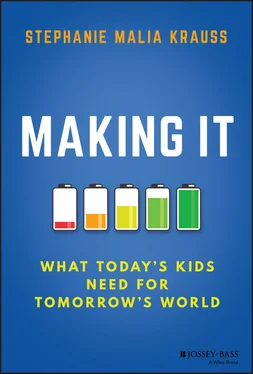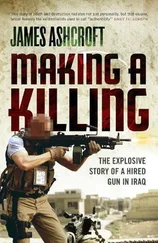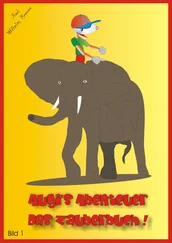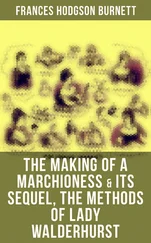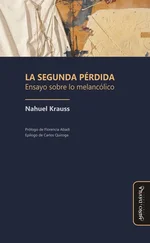In this year of immense loss and struggle, I think about our children and about how this reality is all they know. While there is so much we don't have control over, there is so much we do. We can find beauty in the brokenness, because there is still hope and space to reimagine.
If we get this right, then maybe one day our children can write the book Made It— a history book about how they had what they needed—not just to get by, but to build a better tomorrow.
Stephanie Malia Krauss
November 2020
FOREWORD BY KAREN PITTMAN
Stephanie Krauss is a force of nature. A colleague introduced Stephanie to me at a conference I was keynoting in St. Louis some years ago. It took only a few minutes for me to experience the depth of her passion and intellect. It took less than an hour for me to commit to helping her figure out how to bring the incredible lessons she had learned—in life and by running a charter school for undercredited, overage students—to the national stage. That commitment resulted in a quickly negotiated fellowship with the Forum that served as the springboard for friendship and colleagueship that gets richer with every opportunity we tackle together—formal or informal.
Our first colleagueship project remains, by far, the most ambitious. It started with an audacious challenge: create a universal list of competencies youth need to succeed that speaks clearly to young people, resonates with leaders across multiple systems (from education to juvenile justice), and is grounded in everything we know about learning and development. This was something the Forum staff and I had dreamed of for years, but never tackled. An hour into her first staff meeting, however, we knew Stephanie was up to the task.
Stephanie shared with our team that in an effort to make high school graduation requirements relevant and reachable for students—many of whom were, on traditional measures, four or more years behind—Stephanie and her staff had broken down the Missouri graduation requirements into 21 accessible competencies that students needed to master before their 21st birthdays. They called it “21 by 21.” Brilliant idea. Accessible results. It was an unbalanced list, however, because too many competencies focused on specific academic skills. When asked about the imbalance, Stephanie answered that she had to start with the academic skills to meet accountability requirements. She squeezed broader life skills in where she could.
Ready by Design: The Science (and Art) of Youth Readiness was the down payment on a gift we hoped to deliver to practitioners and administrators who work with young people in all of the settings where learning and development can, should, and usually does happen. The gift stayed in layaway for lack of funding. But the ideas, and our passion for making them accessible across fields and systems, remained. Our strategy, even as we went our separate ways, has been to encourage decision-makers to put young people and their drive to beat the odds at the center of every discussion and decision. Our secret goal, of course, was to find a way to complete the down payment and deliver the gift.
Stephanie has delivered. And the gift is needed now more than ever. 2020 will go down as the year in which almost every assumption about why some young people “make it” and others don't is tested; about the relative importance of the assets families, schools, community organizations and the larger community, as well as social, physical, and economic contexts play in a young person's success; and, about the underlying reasons behind the huge disparities in assets. 2020 will go down as the year in which educators—in classrooms, clubhouses, courthouses, camps, and community centers—openly acknowledge that the tools and plans they have are not sufficient for the massive design-build job at hand.
This book starts with the question, “What does it take to ensure young people are ready?” This is the right place to start. This is not because we don't need to improve our schools (the starting place for many books). It is because schools are a means to an end, and when the end is defined narrowly as an academic credential, the opportunity to explore all of the pathways to success and understand all of the barriers is truncated. COVID has moved us into what will likely be a new wave of school reimagining efforts.
This book, and others like it, can help those charged with directly supporting young people's development with the confidence and narratives they need to actively balance the requirements of the education system—which focuses on academic competence and academic credentials—with a broader awareness of the whole ecosystem young people are in, forging connections and building broader competencies, which is hampered or buoyed by their ability to access cash and credit.
Making It is not a review of curricula or exemplary programs. It is a big-picture overview of the forces that influence young people's ability to focus, learn, grow, and succeed. In the following pages, Stephanie masterfully:
Breaks down the science of how learning and development happen—giving accessible, useful references and examples not only of how our minds process and make meaning, but of how stress and information overload interfere with learning, how demands and opportunities that youth face will make it even harder for them to manage their learning journeys (formal and informal), and what adults—from families to educators—can do to protect and guide.
Makes sense out of what has often become a cacophony of acronyms and skill lists, building directly on the work we started in Ready by Design. Even if you consider yourself SEL-literate, this section is worth a careful read.
Makes it clear that credentials and competencies are different and that neither are sufficient to ensure success.
Gives us five clear, important things we can do to be currency-builders that link directly to the research and translate easily into action.
When we hit the road to popularize the ideas in Ready by Design , we coined the phrase “readiness is a right.” I had this phrase in mind as I read the manuscript. Readiness is defined as both the capacity and the motivation to tackle challenges and opportunities that come your way.
As we think about what it takes to make readiness a right, we have to reflect on the fact that many of this country's young people are engaged in a much more basic fight to make humanity a right. Black Lives Matter does matter.
This book lays out a powerful argument for why we need to broaden our understanding of what it takes to “make it” as a young person today, and what it will take for the next generation, who could live to be 100. It offers stark examples of the privileges that come with wealth in this country and, in contrast, the challenges that poverty compounds. It acknowledges but does not lead with the fact that there are Black and brown young people in this country, and particularly Black young men, who are struggling and suffering and standing together because their right to live free in their communities is challenged every day.
Stephanie's “light touch” approach is intentional, and the ideas in this book are meant to be a starting place. I know because I asked. The fact that I contributed this foreword shows that Stephanie understands and continues to grapple with these realities, as reflected in her preface.
Competencies, credentials, connections, and cash are the currencies needed to make it in this country. They are all you need if you are white. If you are Black, indigenous, or a person of color, however, making the commitment to build these currencies has to be coupled with a critical analysis of why they have been denied historically, and why the systems charged with your success are still operating under rules that were designed for your failure.
Читать дальше
